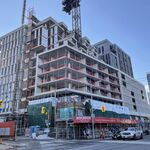EnviroTO
Senior Member
What a bizarre and totally unfounded claim. You think they thought up an 8-line transit network simply to kill a poorly planned subway line that only coincided with Transit City for less than 5 km of the 120 km network?
That's tin-foil hat territory!
Especially when you consider the tracks that existed running at street level on Yonge and Bloor prior to the creation of the subway network. If the master plan was to focus on eliminating the possibility of extending the Sheppard subway it is probably the most inept method of doing so. The success of the Yonge and Bloor streetcars in building density along those streets is exactly what led to those streets being suitable for subways.




